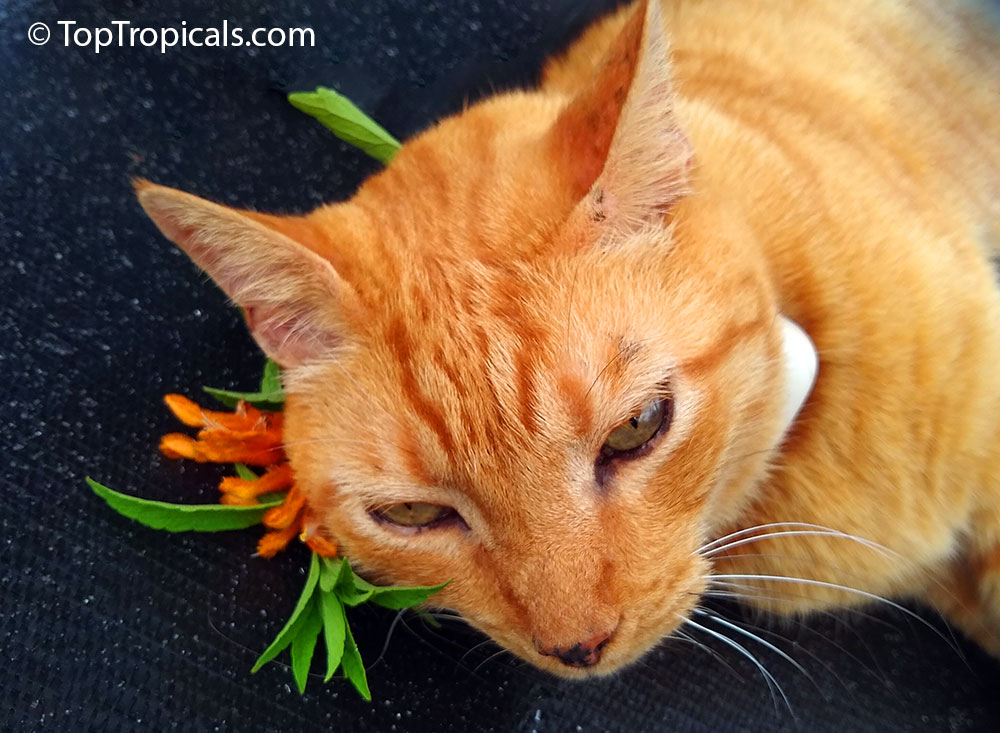Leonotis leonurus: Lion cub's tails looking out of a tall grass...
by Alex Butova, the Witch of Herbs and Cats
Alexandra Butova is our columnist, journalist, and photographer, living in Riga, Latvia. She has has been with TopTropicals since Day One (2002), writing about magic plants, travel, and of course cats - from the CatNation she belongs to. Alex is in charge of TopTropicals.ru website.
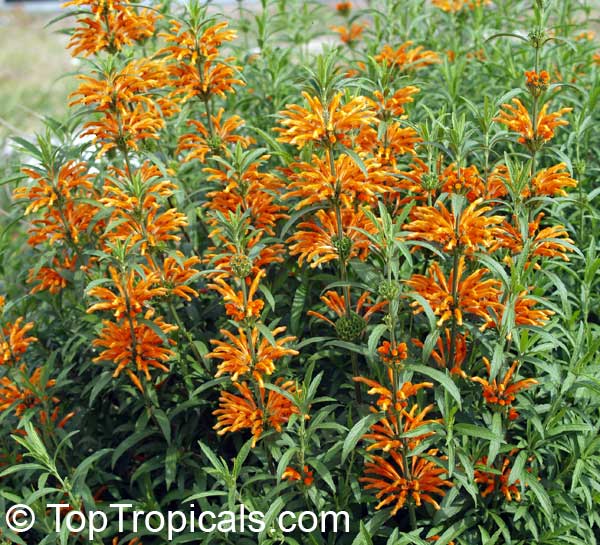
Lion cub's tails looking out of a tall grass...
When you drive along the savannah and veld of South Africa, you can see a groups of lion’s cubs running among the tall savannah grass. Their ears look out of the grass as bright cheerful spots. The tips of their tails swing by the wind with the grass where the cubs hide. Too many Lion’s cubs? What a surprise!
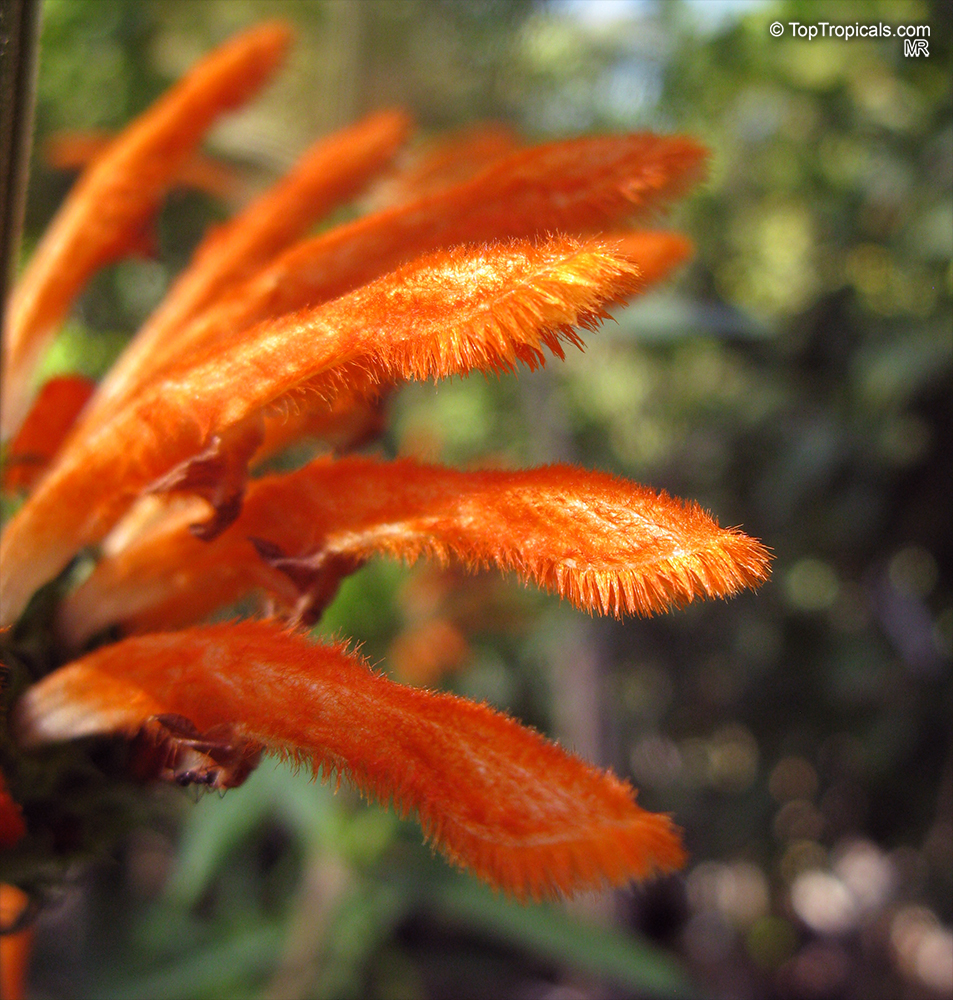
However, these are not the cubs of the King of Animals, these are the tips of pretty flowers endemic to this region...
Leonotis leonurus, also known as Lion'sEars, Lion's TailandWild Dagga, is a plant species in themintfamily,Lamiaceae. The nativehabitatofLeonotis leonurusis damp grasslands of Southern Africa, where it is very common. Leonotis leonuruswas one of the many Cape Plants taken to Europe for gardening purposes many years ago, it is reflected in the European gardening literature as early as 1673.
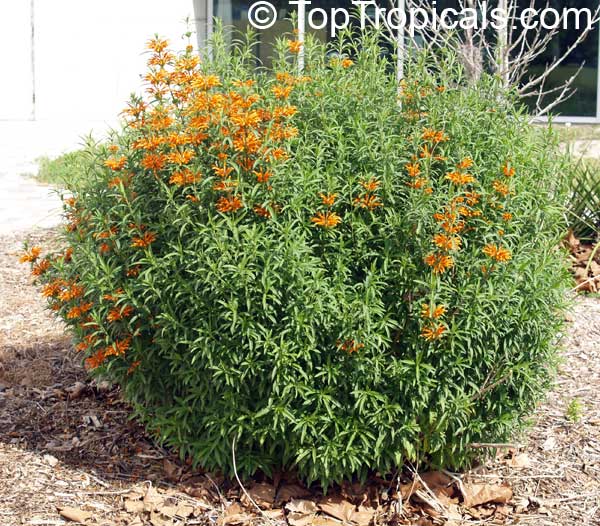
It is a fast-growing, soft-woody, robust shrub which grows up to 3-5 ft tall and 1-3 ft wide. The dark green 2-4" long narrowly lanceolate leaves are rough on the upper leaf surface, velvety on the lower leaf surface, and have toothed margins. These leaves are highly aromatic when crushed and have a strong herby scent! The stems are velvety, woody at the base and distinctively square in cross section. The stems are brittle and can break in strong winds.
The bush has tubular orange flowers in tiered whorls, typical to the mint family. They rise above the foliage mass during the flowering season. It is they who pay attention to themselves, introducing confusion and posing as lion ears and tails!
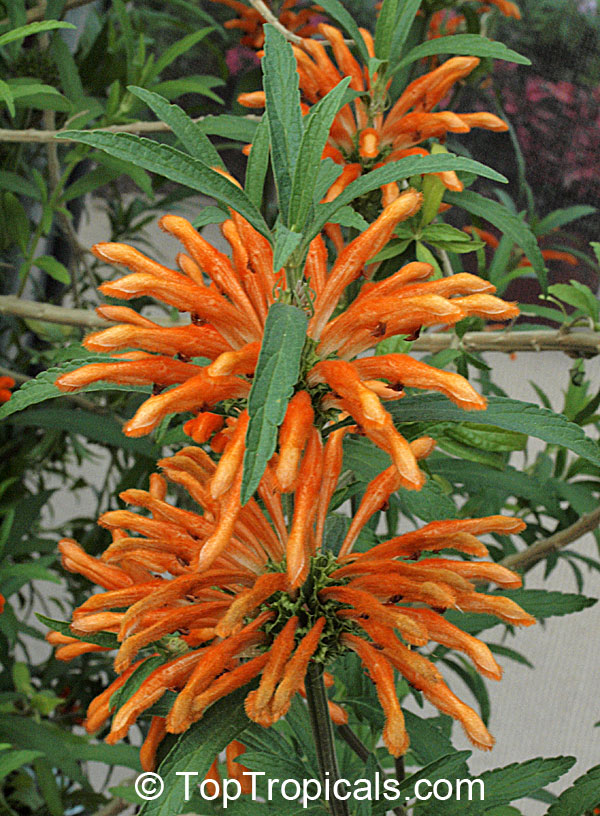
Flower petals purportedly resemble Lion's ears and dark green bunch of upper leaves from a distance resemble Lions tails. Just like a pet cat, a lion has a long tail which helps it to balance. Unlike any other cat, a lion's tail has a black tassel at the end, which first appears when it is between five and seven months old. This can be used Lion's moms to lead other cubs through tall grass!
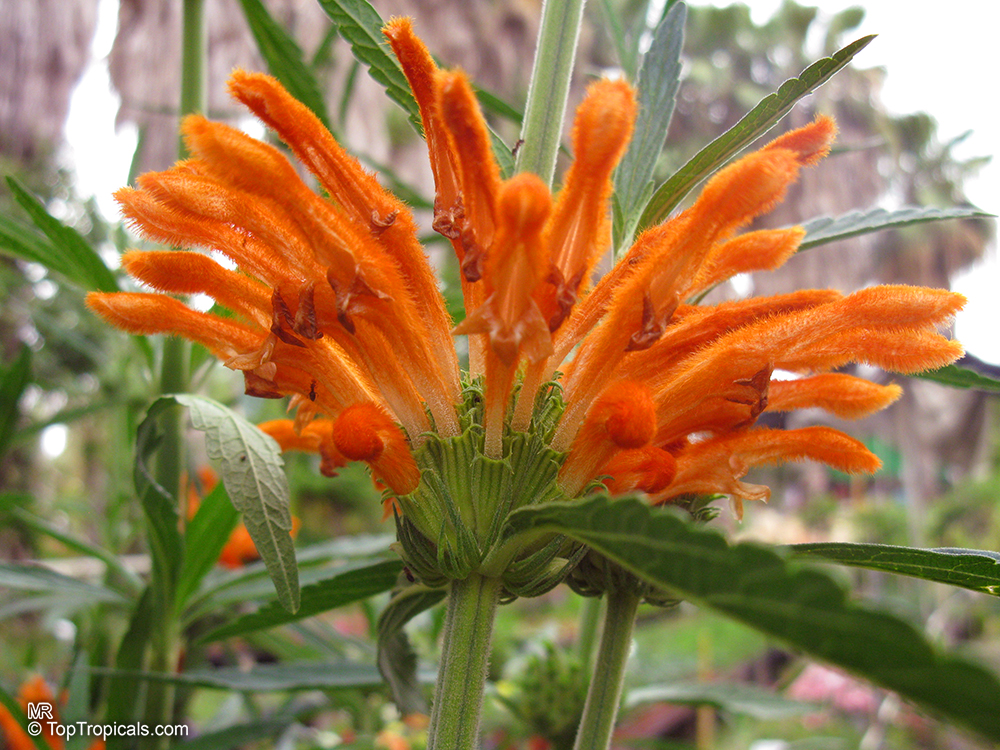
Leonotis leonurusis primarily bird pollinated and the flower presentation and pollination mechanisms are all structured to support this type of pollinator. The flowers contain sweet nectar that attract many nectivorous birds such as sunbirds. The curved beaks of these African birds which are used for feeding from these tubular flowers have been a contributing factor to the brilliant orange-red color and tubular shape of these flowers due to co-evolution.
However the nectar and pollen is also attractive to honey bees, butterflies and other insects who also visit the flowers.
A curious thing, the plant continues growing through the flower! This creates a multi-level appearance.
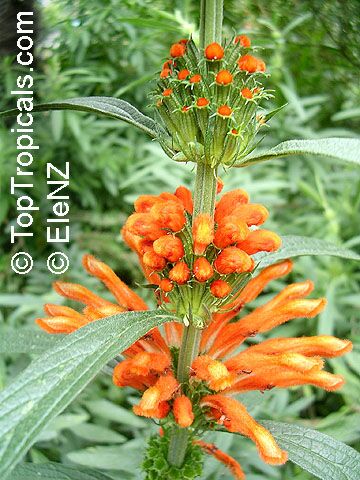
Generally the flowering period is in summer, continuing in warm regions through to autumn and even winter in the tropics regions. In cooler parts of the world, this plant is grown in conservatories for its ornamental value. Pruning may be beneficial to encourage repeat flowering.
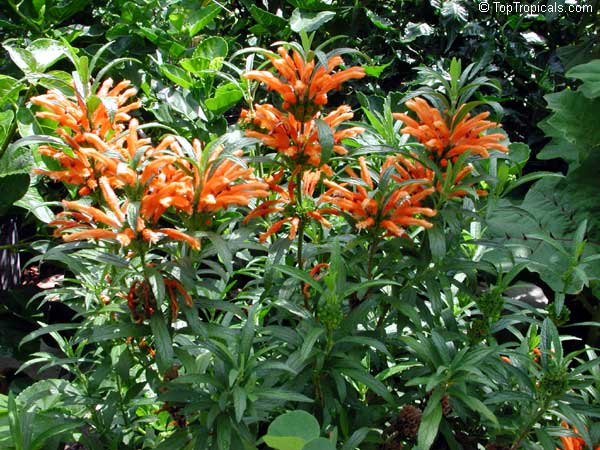
Apricot, yellow and white flowered forms are also known. The white flowered from was described asLeonotis leonurusvar.albifloraBenth, and is still widely cultivated today as an attractive alternative to the orange flowered form. Hybrids between the two can sometimes be seen as apricot colored or off-white individuals.
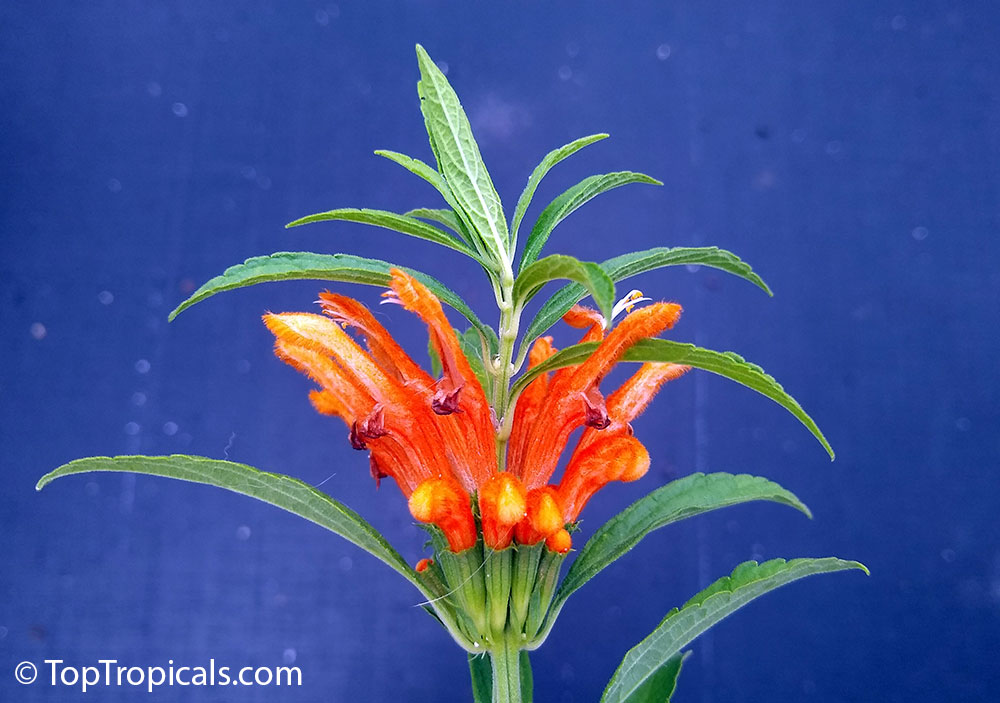
Leonotis leonurus has a long history of medicinal use by traditional African tribes. The infusions made from flowers and seeds, leaves or stems are widely used to treat tuberculosis,jaundice,muscle cramps,high blood pressure,diabetes,viral hepatitis, dysentery, anddiarrhoea. The leaves, roots and bark are used as an emetic for snakebites, bee and scorpion stings.The fresh stem juice is used as an infusion drunk for 'blood impurity' in some places of South Africa.
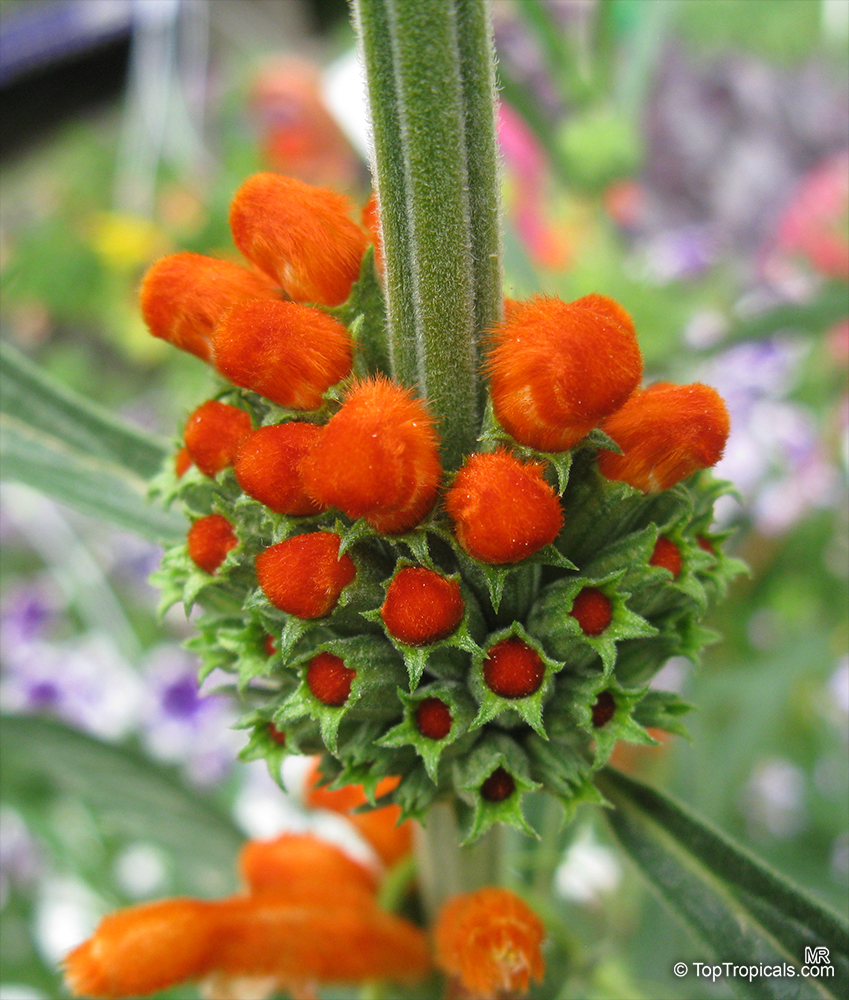
This plant has a history of being used for its psychoactive properties which have been compared to a mild version of the Cannabis plant:
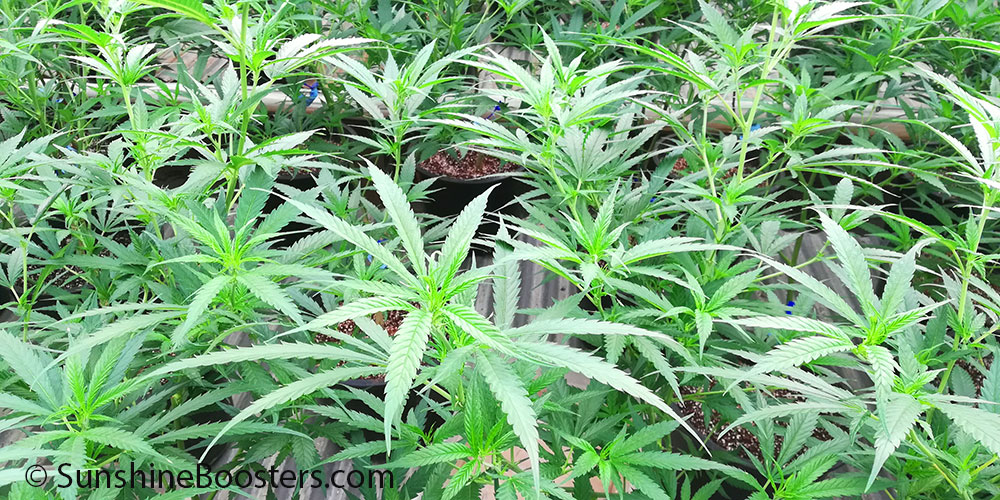
The dried leaves and flowers are known to create a mild calming effect. The main active constituent is leonine and in high doses the plant is known to be toxic, affecting bodily organs, blood cells and bodily functions. Modern herbal medicine mainly uses this plant for premenstrual discomfort and a calming tea infusion may be prepared.

Leonotis leonurusis cultivated as anornamental plantfor its copious orange blossom spikes and is used as an accent or screen ingardensandparks.
This plant requires at least 6 hours of sun per day for optimum growth. It is drought tolerant once established, but benefits from regular watering when dry. There is no specific soil type required, except that the ground is well drained. This plant is relatively frost tolerant, but may lose its leaves in very frost prone areas and re-grow them when the weather becomes warmer. Plant in full sun and provide adequate water during the growing season, application of a liquid fertilizer can be applied at the beginning of the new season.
RECOMMENDED FERTILIZERS:
SUNSHINE Megaflor - Bloom Nutrition Booster
Tropical Allure - Smart-Release Booster
